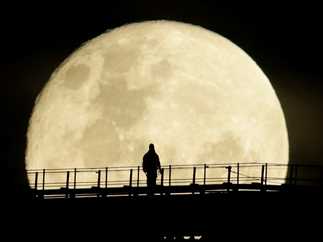| Event ID: | 31666 |
| Contact Name: | Ministry of education |
| Contact Email: | mahaalrdadi2014@gmail.com |
| Contact Phone: | 00966599502023 |
| Organization: | School67 |
| Event Web Site: | https://twitter.com/67gschool?s=08 |
| Dates: | 4th October 2019 to 10th October 2019 |
| Physical Event: | Yes |
| Type: | Public |
| Start/End Type: | Both Starts and Ends During WSW |
| Country: | Saudi Arabia |
| State/Province: | Area madina |
| City: | madina |
| Address: | القبلتين |
| Location: | |
| Event Name: | Moon Gate Stars |
| Event Description: | The world celebrates Friday, the World Space Week 2019, where this year's celebration comes under the slogan 'Moon: a gate for stars', and focuses on the importance of the moon as a gate for stars, celebrating the fiftieth anniversary of the first human step landing on the moon on July 20 In 1969. With this human step, the existence of man is no longer confined to the Earth for the first time since our existence about 200 thousand years ago. This theme is dedicated to focusing on Earth's closest neighbors in space, in celebration of the astounding achievement of landing on the moon, and also to reflect on the value and importance of the moon in the future space endeavors of mankind. The United Nations General Assembly adopted resolution 54/68 in December 1999, organizing World Space Week from 4 to 10 October to celebrate each year internationally the contributions of space science and technology to the improvement of the human condition. On October 4, 1957, the first man-made surface-to-surface rocket, Sputnik 1, was launched, opening space for space exploration. 10 October 1967 was also the day of entry into force of the Treaty on Principles Governing the Activities of States in the Exploration and Use of Outer Space, including the Moon and Other Celestial Bodies. The Soul Based on the study of lunar rocks, which the Apollo missions brought with them to Earth, scientists became aware of the richness of the moon's surface with minerals. Their overall composition depends on whether the minerals are sourced from the Comorian seas (large, dark, basaltic plains formed by volcanic eruptions) or whether they originate from the moon heights. Significant traces of minerals emerged in rocks from the Lunar Seas, with aluminum oxide content of 14.9%, calcium oxide (lime) 11.8%, iron oxide 14.1%, magnesium oxide 9.2%, titanium dioxide 3.9% and sodium oxide 0.6%. The same studies have shown that lunar rocks contain large amounts of oxygen, often in the form of oxidized minerals. Experiments have been conducted to show how this oxygen can be extracted to provide astronauts with breathable air, and can also be used to install water and even to make rocket fuel. The moon also has concentrations of rare earth metals, which are striking for two reasons: On the one hand, rare earth minerals are becoming increasingly important in the global economy, for their large use in electronic devices. On the other hand, China controls about 90% of these rare metals stocks, so stable access to an external source of these metals is seen by some as a matter of national security. The moon also contains significant amounts of water, concentrated in its surface soil and in permanent shadow areas in both its north and south poles. This water will be of great importance as a source of rocket fuel, regardless of its importance as drinking water for astronauts. In addition, the rocks of the moon revealed the possibility of large sources of water in the interior of the moon. Based on the analysis of samples of lunar soil, the concentrations of the absorbed amounts of water ranged from 10 to 1000 parts per million. Photo credit: Reuters |
| Promotional Image: |  |
| Report on the Results: | |
| Attendance: | 0 |
| Attendance is Unique: | |
| Media Impressions: | 0 |
| Media Impressions are Unique: |
Event Years: 2007 | 2008 | 2009 | 2010 | 2011 | 2012 | 2013 | 2014 | 2015 | 2016 | 2017 | 2018 | 2019 | 2020 | 2021 | 2022 | 2023 | 2024
